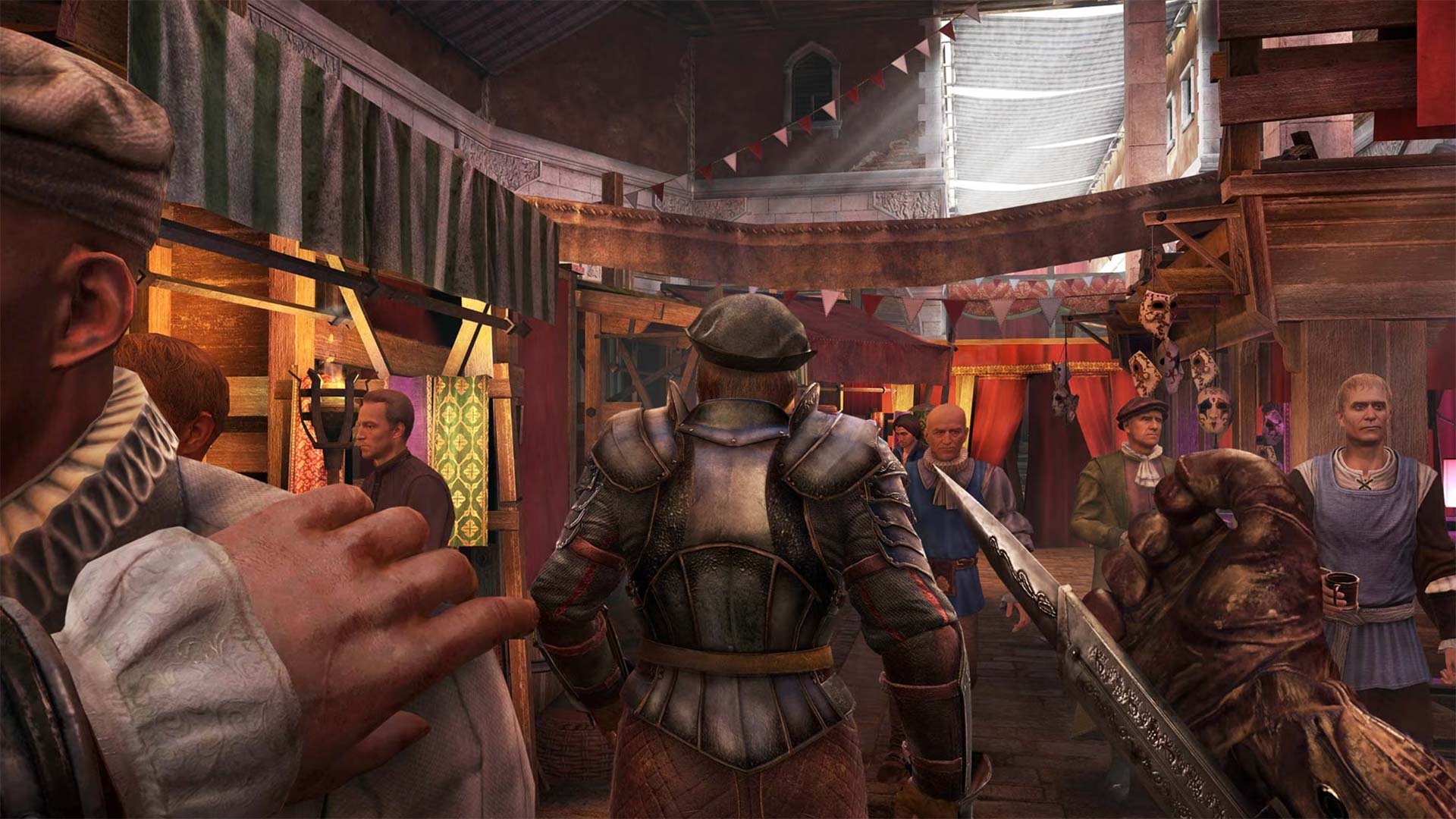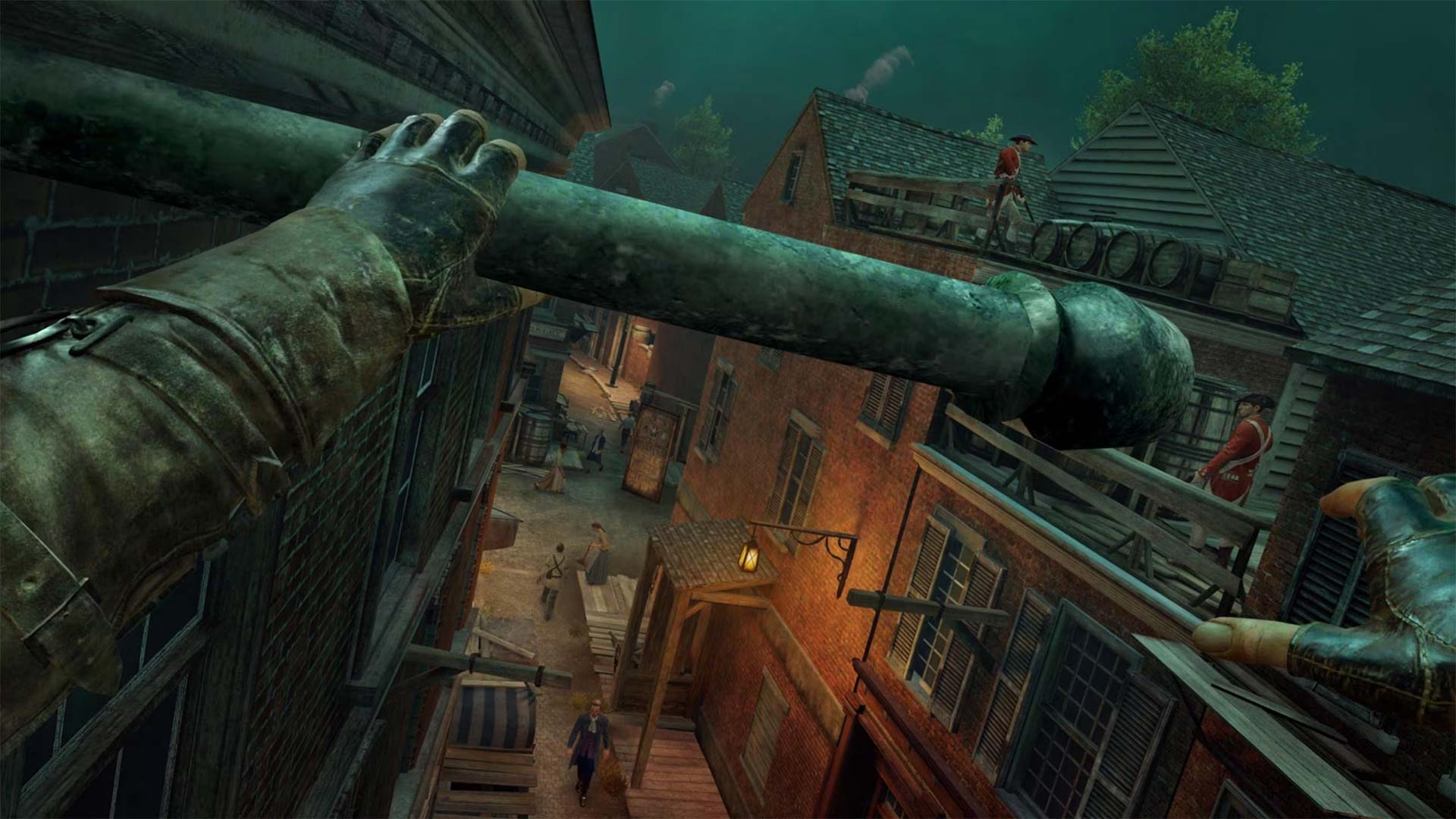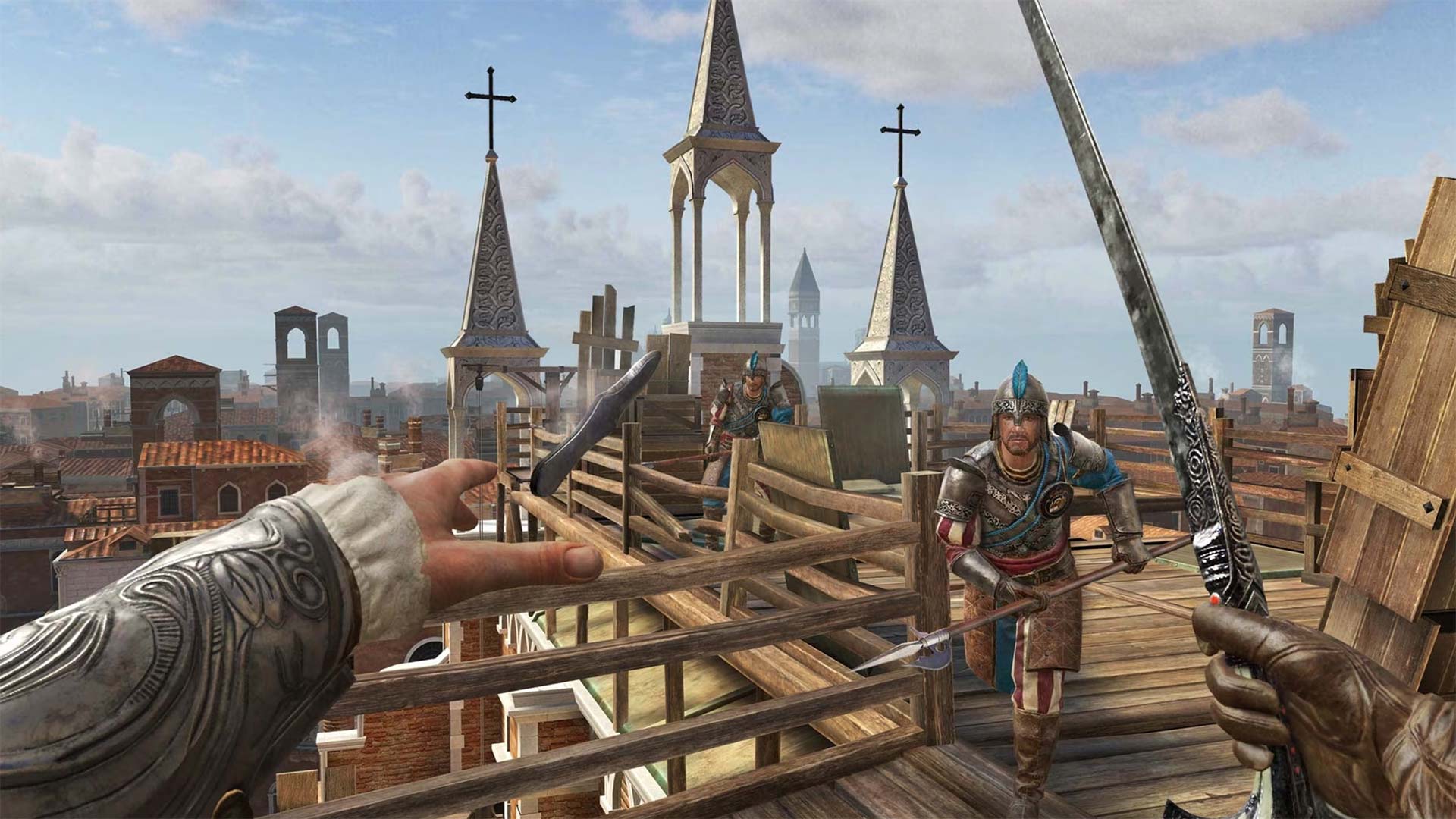
When anyone brings up Assassin’s Creed (AC), the first thing I think of is parkouring across rooftops as Ezio in AC2 while that incredible Jesper Kyd theme plays. Even in those older games, there’s something undeniably freeing about the series’ freeform traversal.
Assassin’s Creed Nexus offers a radically new way to experience that feeling, and so far, I’m really digging it. After going hands-on with the VR title at both Meta Connect and Ubisoft Montreal, I’ve come away impressed at how well it captures the AC experience.
First, that all comes down to the smart decision to feature three recognizable Assassins: Ezio, Connor (AC III) and Kassandra (Assassin’s Creed Odyssey), with Roger Craig Smith, Noah Watts and Melissanthi Mahut all reprising their respective roles. Through these characters, the historical settings of Renaissance Italy, the American Revolution and Ancient Greece can be seen from a completely new perspective.
“We felt it was actually interesting to revisit those locations, those beloved places, from a brand new perspective, rather than having this brand-new perspective and way to play and also brand new characters. So it was a fresh view of those characters,” says game director Olivier Palmieri. “It’s not a remaster. It’s not a recreation of the missions that we had before. It’s brand-new missions with those characters.”
As I played through an Ezio demo, I certainly understood what he meant. Having spent many hours across the series’ interpretations of all three of these settings, I appreciated getting to see them in the first person. There’s a level of intimacy that VR brings that better transports you into the world. Admittedly, the resolution of the buildings wasn’t stellar, but it’s still undeniably neat to get to inhabit these places and get a more realistic sense of their scale through the headset. For what it’s worth, I played on Meta Quest 3 at Connect and Quest 2 at Ubisoft Montreal and didn’t notice a marked difference in visual fidelity.
The most important thing is how it all feels, and I was taken aback by how smooth it was. Climbing, in particular, felt natural thanks to being able to move my arms realistically to grab each virtual handhold, and unlike in other games where only specific ledges are climbable, here you can clamber up pretty much any wall. It’s a much more involved process than the regular AC games, where it’s a pretty basic “hold the run and climb buttons and your character will do the rest.”
This extends to the actual parkour itself. Suffice it to say that leaping across tall buildings in VR could be ripe for nausea, but that never came. Instead, I found a rush of excitement as I took to the air, bounding from one rooftop, beam and rope to the next. Here’s where the automation comes in, as you simply hold the jump button, but ultimately, I think streamlining that process was for the best. In VR, the emphasis should be on the sensation of the parkour itself rather than mechanical complexity.
Palmieri, who worked on the original Assassin’s Creed II and Ubisoft’s first VR title, Eagle Flight, says he drew on his past experiences to make Nexus as comfortable as possible. This includes a teleport system, which is standard in VR games but multi-purpose here since it can be used across parkour and stealth. Options for players afraid of heights, like a subliminal grid to make you feel grounded even on high-up edges and blacking out peripheral vision, have also been added. Even something like AC‘s signature leap of faith, which felt wicked in VR, can be turned off in favour of teleporting if that’s too discomforting.

While this is from a Connor level, not Ezio’s, this gives you an idea of what parkour looks like in VR.
“We had a dedicated team to work from the beginning to find all the recipes, the secrets, and the features to help make the game accessible to everyone. Accessible in terms of accessibility features that we developed, but also in terms of comfort,” says Palmieri. “So there are various presets for your settings and you can find the one that suits you that you can change anytime. But we really want the game to be for everyone and everyone to not feel afraid to play this game.”
Combat also felt surprisingly dynamic thanks to full motion controls over my blade. I had to actually react and block accordingly to parry and knock enemies off balance before responding with my own slashes and jabs. The crossbow is also intuitive as you have to manually draw it from your back, nock an arrow, aim and release. There are also items like throwing knives and smoke bombs to use, but I didn’t get a chance to see how well they’d work. But the best part was getting to use a hidden blade by making the same wrist flick gesture in real life and then stabbing forward. I’ve carried out so many assassinations in the series, but this lends it a new, engaging and up-close-and-personal feel.
My only real concern so far is the mission design. The one I tackled after the tutorial bits involved Ezio tailing a man in a fairly dry “follow behind the target then duck behind cover when he turns around” rhythm. I’m hoping the final product has more variety in the other quests, especially considering the radically different time periods. Otherwise, I’m very much looking forward to Assassin’s Creed Nexus. It’s nailed the feeling of being an Assassin but amplified it through VR’s uniquely immersive capabilities. And since I only got a taste of Ezio’s world, I’m especially eager to dive into Kassandra’s shoes in Ancient Greece, as Odyssey remains one of my favourite Ubisoft titles in no small part thanks to the lovable mercenary.
Otherwise, I’m very much looking forward to Assassin’s Creed Nexus. It’s nailed the feeling of being an Assassin but amplified it through VR’s uniquely immersive capabilities. And since I only got a taste of Ezio’s world, I’m especially eager to dive into Kassandra’s shoes in Ancient Greece, as Odyssey remains one of my favourite Ubisoft titles in no small part thanks to the lovable mercenary.
Assassin’s Creed Nexus will launch exclusively on Meta Quest 2, Meta Quest Pro and Meta Quest 3 on November 16th for $39.99.
Image credit: Ubisoft
MobileSyrup may earn a commission from purchases made via our links, which helps fund the journalism we provide free on our website. These links do not influence our editorial content. Support us here.



